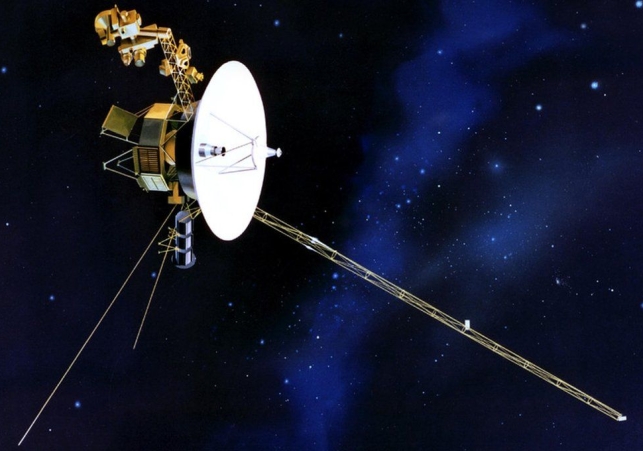
Voyager 2 Probe's Communication Success and Pioneering Space Missions
Voyager 2 Probe's Communication Success and Pioneering Space Missions: Exploring the Outer Planets
NASA's Voyager 2 probe, a historic space mission launched in 1977 to explore outer planets and represent humanity to the universe, recently faced a communication glitch when mission control mistakenly cut contact. Currently positioned over 12.3 billion miles away from Earth, well beyond the solar system, Voyager 2 had its antenna inadvertently pointed two degrees away from Earth on July 21. This left the probe unable to transmit data or receive commands until its automated re-orientation maneuver, scheduled for October 15. However, a recent successful effort to re-establish contact has raised hopes of resolving the issue sooner.
Voyager 2 Probe's Communication Glitch
NASA's Voyager 2 probe, a pioneering space mission launched in 1977, encountered a communication disruption when a series of planned commands caused its antenna to be mistakenly pointed two degrees away from Earth on July 21. Positioned more than 12.3 billion miles from Earth, far beyond the solar system, the probe was unable to transmit data or receive commands from its mission control. The situation was expected to persist until October 15 when an automated re-orientation maneuver was scheduled to take place.
Efforts to Re-establish Contact Prove Successful
Despite the initial expectation of re-establishing contact only after the scheduled maneuver on October 15, the team at NASA's Jet Propulsion Laboratory (JPL) took a last-ditch effort to enlist the help of the Deep Space Network. This network comprises an international array of large radio antennas, including a few orbiting Earth. To their surprise, the effort was successful, and the team received a "heartbeat" signal from Voyager 2, indicating that the probe was alive and operational. This breakthrough buoyed the spirits of the team, leading them to generate new commands to attempt pointing the spacecraft antenna towards Earth. While there is only a low probability of success, NASA will continue its efforts to restore communication with the probe.
ALSO READ:
Voyager Missions and Their Remarkable Explorations
The Voyager missions, currently part of the NASA Heliophysics System Observatory and operated by JPL, were launched with the primary objective of exploring outer planets and serving as representatives of humanity to the universe. Voyager 2 successfully left the heliosphere, the protective magnetic bubble provided by the Sun, in December 2018 and is currently journeying through the space between the stars. Along its incredible journey, Voyager 2 explored Jupiter and Saturn, becoming the first and only spacecraft to visit Uranus and Neptune.
The "Golden Records" and the Message to Extraterrestrials
Both Voyager spacecraft carry "Golden Records," 12-inch, gold-plated copper disks designed to convey the story of Earth to potential extraterrestrial beings. These records contain encoded images of life on Earth, a map of our solar system, and symbolic instructions on how to play the record. A committee chaired by the renowned astronomer Carl Sagan curated the contents of the record, which also includes music and sounds from our planet. Voyager 1 entered the interstellar medium in 2012 and is currently approximately 15 billion miles away from Earth. While the Voyagers continue to transmit scientific data, their power banks are expected to be depleted sometime after 2025.
In conclusion, NASA's Voyager 2 probe experienced a communication glitch that left it unable to communicate with Earth. However, a recent successful effort has provided hope for resolving the issue earlier than expected. The Voyager missions have been pioneering in exploring outer planets and representing humanity to the universe. The "Golden Records" they carry serve as a symbolic message to potential extraterrestrial beings, conveying the story of our world and its inhabitants.





